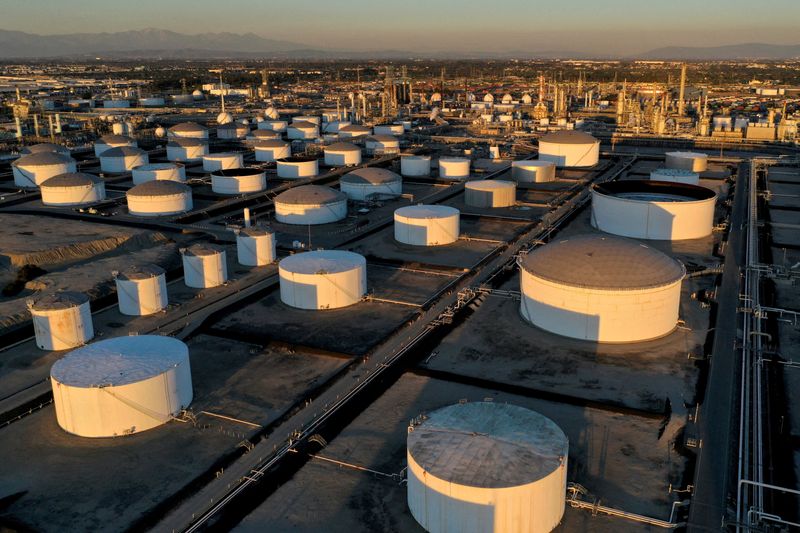Oil prices steady, with investors focusing on Fed decision
By Yuka Obayashi
TOKYO (Reuters) - Oil prices steadied on Wednesday, after rising in the previous two sessions, as investors await the U.S. Federal Reserve's anticipated interest rate cut, with the potential for more violence in the Middle East supporting the market.
Brent crude futures for November dropped 3 cents to $73.67 a barrel at 0053 GMT. U.S. crude futures for October slid 11 cents, or 0.2%, to $71.08 a barrel.
Both contracts gained by about $1 a barrel on Tuesday on lingering supply disruptions in the U.S., the world's biggest oil producer, after Hurricane Francine and as traders bet that demand may increase following what would be the Fed's first interest rate cuts in four years.
Prices were also supported by the potential for more violence in the Middle East that may cause possible output disruptions in the key producing region after Israel allegedly attacked militant group Hezbollah with explosive-laden pagers in Lebanon.
"Markets have calmed down as concerns over hurricane damage and escalating tensions in the Middle East have been factored in," said Mitsuru Muraishi, an analyst at Fujitomi Securities.
"Now, investors are focusing on the Fed's rate cuts which could revitalise U.S. fuel demand and weaken the dollar," he said, predicting that oil prices are likely to maintain a bullish tone after Brent hit its lowest since 2021 last week.
Traders kept bets the Fed will start an expected series of interest rate cuts with a half-percentage-point move downward on Wednesday, an expectation that may itself put pressure on central bankers to deliver just that.
Hezbollah promised to retaliate against Israel after the pagers detonated across Lebanon on Tuesday, killing at least eight people and wounding nearly 3,000 others, including fighters and Iran's envoy to Beirut. Israel declined to comment on the detonations.
The market also found support from the expectation of U.S. oil purchases for the Strategic Petroleum Reserve (SPR).
The Biden administration will seek up to 6 million barrels of oil for the SPR, a source familiar with issue said on Tuesday, a purchase that if completed will match its largest yet in the replenishment of the stash after a historic sale in 2022.
U.S. oil inventory data released on Tuesday from the American Petroleum Institute (API) was mixed. Oil stockpiles rose by 1.96 million barrels in the week ended Sept. 13, according to market sources citing the API figures, but gasoline and distillate stocks both rose by about 2.3 million barrels.
Analysts polled by Reuters estimated on average that crude inventories fell by about 500,000 barrels last week. The U.S. Energy Information Administration's report is due on Wednesday at 10:30 a.m. EDT (1430 GMT).
Source: Investing.com
